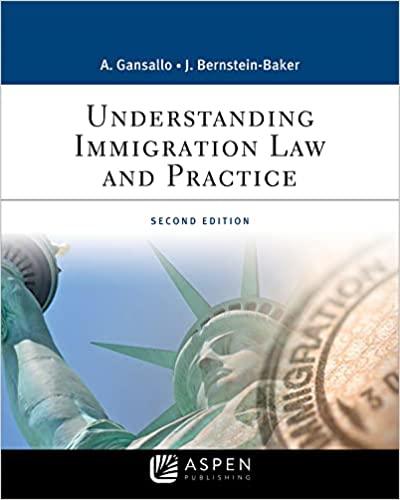Question
please see the two short paragraphs and talk about what did you like about their approach, and what could be improved? 1. A town with
please see the two short paragraphs and talk about what did you like about their approach, and what could be improved?
1. A town with the historical preservation agency or the historical commission and I should work together to implement ADA compliant sections of the historical preservation site. Overall, the ADA should triumph since it is established law. In addition, adding ADA-compliant components, such as ramps or tour guides who are proficient in sign language, has benefits for the historical preservation agency or the historical commission as it increases tourism to the historical property. Preservation Brief 32 outlined that access to public properties is a civil right, which means that historical preservation agencies must balance accessibility with preserving artifacts and the site. This balance is necessary as the ADA is established law and the brief outlines three areas where historical preservation agencies can implement modifications while maintaining the character of the properties. These three areas include reviewing the significance and character defining features of the property, assessing the current level of accessibility and then evaluating and developing a plan to implement accessible option "within a preservation context." I recently visited Mt. Vernon with my mom and I think this balance was on full display. The historical preservation agency implemented ramps outside of the estate that led into one of the doors of the estate, rather than modifying the estate's integral foundation. The estate also did not have elevators so the second floor was not accessible, but implementing an elevator may have changed the "character-defining feature" of the home. In cases similar to Mt. Vernon, I would recommend a compromise that starts with implementing accessible options for tour groups and if possible, modifying the ground floor/first floor of a historically preserved building to include accessible options without disrupting the interior features or its foundational base. In addition, I would recommend that some of the historical agency's educational programs, bathrooms and amenities, such as food vendors or convenient stores, be accessible to everyone.
Since the ADA is established law, I would argue that the historical preservation agency needs to use their discretion and follow the preservation brief to ensure they are being guided by the legal requirements. The Schneider-Ingram model is especially applicable in this case as the ADA changed and shaped the legal environment in how public administrators ensure their agency and regulations are following the ADA, while also granting them the discretion to modify their approach to meet accessibility requirements within a preservation context. Lee and Rosenbloom also argued that understanding the laws are essential to performing duties that follow legal requirements. In this case, the ADA is not vague, as it clearly stated that historic properties are not exempt from meeting the accessibility requirements. The law also clarified that not every historic property may be able to meet the requirements, but that the properties should follow the guidelines set forth in the preservation brief and the alternative requirements that Congress provided. I would argue that public managers overseeing historic public properties need to understand the guidelines and the ADA to ensure they are not infringing upon the civil rights of individuals with disabilities.
2. In this case, I believe that in order to decide how to best navigate this predicament, we must understand the intention, motives, and moral drivers behind the behavior of this family member. That is the most integral component when it relates to limiting the power of this donor's family member. In the case that his intentions are purely to accelerate the growth and efficiency of this community foundation, then I truly don't see the issue of continuing to accept the input and advice of fund allocation on behalf of the organization as a whole. However, if this family member is using this power as a vessel to promote personal growth and wealth, then there exists a clear issue. That being said, with application to the "home rule", this type of self and local governance creates more flexibly responsive interpretations to authority and its resources. Someone with a pulse in the community that is able to distinguish which concerns are quintessential to address cannot hurt, as long as his moral obligation is in the right place. With the right people, the right governance, the right infrastructure, and the right technology, efficiency of donations can be maximized and in order to truly deliver the best value to the community in which these donations are intended to serve.
Like I mentioned, it's the cliche saying "go with your gut." We must truly understand how integral this person is. Emotions help encourage us to obey society's confinements and moral rules in order to effectively cooperate and live with one another. Self-conscious emotions like guilt, shame, and embarrassment motivate us to follow society's moral norms. Those that feel the most guilt tend to be the most moral and cooperative because they don't tolerate those emotions and feelings very well upon experience. These motivations are significant because people fear the experience of what they would face from an emotional standpoint if they were to make an immoral decision. If we can evaluate the core values of this family member in order to make the most educated decision, we can move forward from there to decide whether or not we will need to limit his control of the fund.
Step by Step Solution
There are 3 Steps involved in it
Step: 1

Get Instant Access to Expert-Tailored Solutions
See step-by-step solutions with expert insights and AI powered tools for academic success
Step: 2

Step: 3

Ace Your Homework with AI
Get the answers you need in no time with our AI-driven, step-by-step assistance
Get Started


